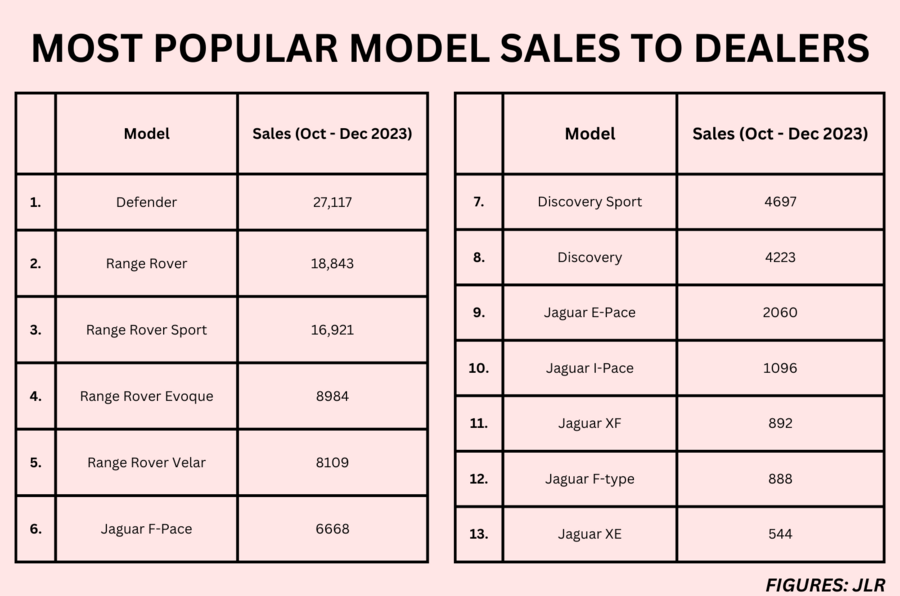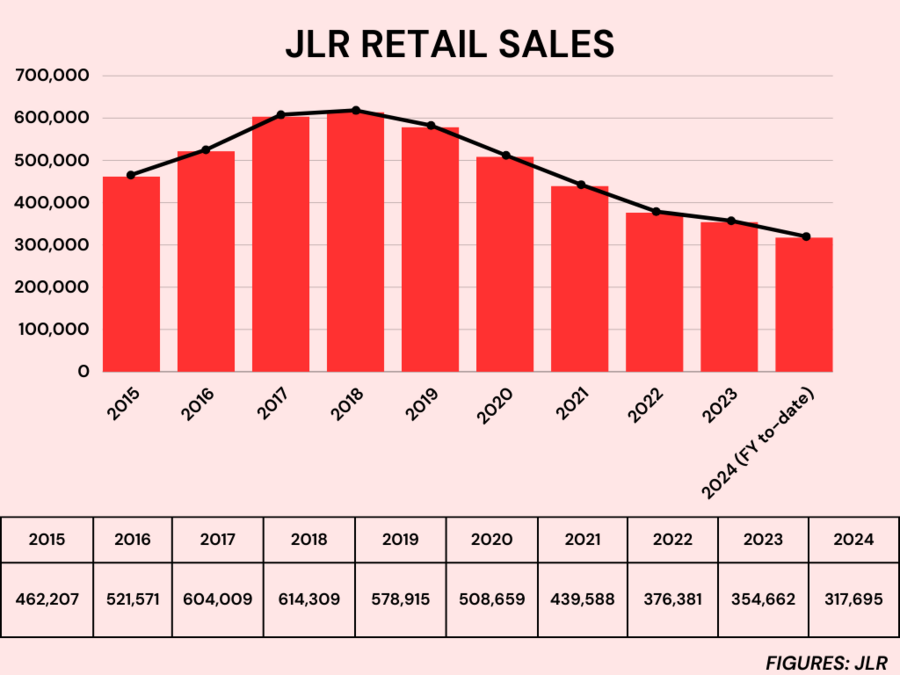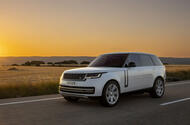British brand's turnaround has been fuelled by higher sales of its most profitable models
JLR, formerly Jaguar Land Rover, is booming again after shaking off an extended period of financial gloom that started in China over five years ago and was compounded by the Covid crisis.
The company reported its highest quarterly profit in six years for the three months ending December 31 and posted an nine-month profit margin of 8.3%, putting it on course to beat the 7% it promised in the dark days of 2021 it would achieve for the full 2024 financial year ending March this year.
The turnaround has been fuelled by higher sales of its most profitable Range Rover, Range Rover Sport and Defender models, which the company can now build in sufficient enough quantities to generate healthy profits-before-tax (EBIT) of £1.5 billion in the nine months to the end of December.Â
With JLR continuing to forecast healthy returns up to its promised 10%+ margin by 2026, the company is poised to generate profit of over £2 billion for its financial year ending March 31. That puts it within touching distance of its company record of £2.6 billion recorded nine years ago for the year ending March 2015.
The sales profile of the company has changed since then. Nine years ago the best-selling model was the compact Range Rover Evoque, and it was about to be usurped by the newly launched Discovery Sport, both the Land Rover brand’s smallest models. For the last nine months however the Defender has led sales, followed by the Range Rover and Range Rover Sport.Â
In that time the average selling price of JLR’s cars has increased by almost £20,000 from £56,554 to £74,225 in the last quarter.
JLR’s mistake back then was to chase the German premiums with the goal of selling over a million a year, much of which was expected to come from Jaguar. Expenditures went up, but pricing power didn’t. The result was losses, the exit of the plan’s architect, Ralf Speth, and introduction of the Reimagine strategy with its promise to “target growth in our most profitable segmentsâ€.
It worked. The lower-priced models are still part of the JLR mix, but today the Defender sells more than triple the Evoque and over five times the Discovery Sport.

Volumes are creeping up again. After falling to a 10-year low of just over 350,000 cars in the last financial year – well down on 2018’s record of 614,309 – JLR has posted sales of over 100,000 for each of the last four quarters. Indeed, the jump in numbers compared to the same quarter last year was the big reason for the increased profit, bringing in an extra £441 million.Â
Other tailwinds include a £271 million boost from falling material costs. As semiconductor supply improved, so JLR didn’t have to pay exorbitant sums to brokers just to secure enough. “We are not having to spend anywhere near the amount of money that we were last year on chips,†Richard Molyneaux, JLR chief financial officer, said on the company earnings call.
The money generated is helping demolish the company’s once formidable debt mountain. Net debt at the company stood at £1.57 billion at the end of December, down from £3.8 billion at the same time the year before. The company targets to knock that down to £1 billion by the end of March and to be net debt free by the 2025 financial year.

Cost-cutting has played its part. One initiative has been to simplify the interiors of new models and facelifts to remove more controls to the screens, thereby saving money on knobs and dials. UK buyers have traditionally less accepting of this practice, or say they are, but UK sales were up 54% in the three months to the end of December compared to the same period last year.
Not everything in JLR’s future is looking rosy. The return of discounting wiped out any gains the company made increasing prices in the most recent quarter as both variable (incentives) and fixed marketing costs rose. “It is getting a bit more costly to acquire customers,†Molyneaux said.
JLR has also agreed to raise wages, amounting to what Unite the Union said was a 6% rise from January and a further 5% from January 2025 across its workforce in Birmingham, Wolverhampton, Warwickshire, Liverpool, Solihull and Coventry. Wage increases offset the threat of strikes, but push up the cost of making cars.
Also pushing up costs is the move to EVs, which require expensive plant refits. For example JLR is spending £70 million to install an new underbody facility at Solihull which will make the new Range Rover Electric starting at the end of the year. In total EV spending pushed JLR’s capital investment to £262 million for the quarter, up from £176 million the same quarter the year before.
The company denied that the shift to electric will be dilutive to profits, however. “In many respects, this car is going to be the ultimate expression of what a Range Rover is,†said Molyneaux. “You look at it from that perspective, I don't think there is a reason to necessarily assume that the margins are going to be lower.â€
JLR has taken a more relaxed path to electric after blazing a trial with the Jaguar I-Pace, and has dialled back its 2021 promise of six Land Rover EVs by 2026 to four, with more focus on plug-in hybrids instead. The electric versions of the Range Rover, Range Rover Sport as well as the two new Jaguars are almost certainly costing north of £100,000.
More importantly for JLR is working out how to smooth out its ten-year boom/bust cycle that causes such upheaval at the company. Thankfully this time Tata held on this time and didn’t sell, as Ford did when the company last endured the last but one profit famine over 20 years ago.



